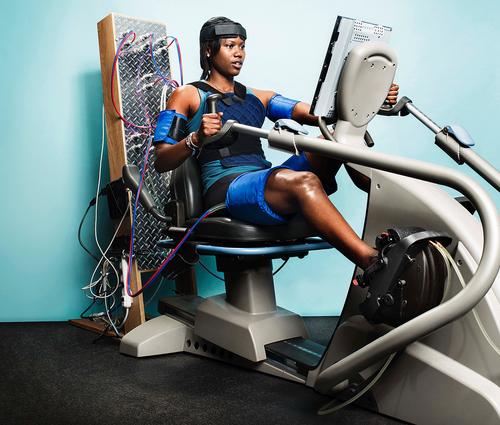16 Sep 2014
Is Vasper the future of spa fitness offerings?
BY Helen Andrews

Vasper, a hi-tech training system based on cooling and compression, has been designed to deliver the benefits of anaerobic exercise without the high intensity effort. With organisations including Google and NASA among its admirers, the product has been earmarked as a potentially vital tool for helping savvy spa operators make sure their fitness offering is up to date.
In the latest issue of Spa Business Q3 2014, Hawaiian entrepreneur Peter Wasowski outlined how the 20-minute intensive interval fitness programme works. Carried out on a recumbent bike, Vasper – which stands for vascular performance – has been created to optimise the health of any user at any level of fitness.
Patented Vasper technology includes compression cuffs filled with cool liquid. “The cuffs place gentle pressure on the muscles of the upper arms and thighs to activate the fast twitch muscles and place them in an anaerobic state which, in turn, increases lactic acid,” said Wasowski. “The build-up of lactic acid pushes the brain into a rebuild and recovery state, so it cranks up the production of anabolic hormones such as human growth hormones and testosterone.”
According to Wasowski, these biochemicals help build muscle tissue, but they also promote fat loss, increased muscle growth, greater energy levels and an enhanced sense of wellbeing.
The second hi-tech feature of Vasper is a core body cooling system. A cooling vest, copper footplates and helmet are all filled with chilled liquid to keep the body’s core temperature lower during exercise. This means users can push themselves a lot harder without sweating and fatigue is less likely to set in – as it does when the body’s temperature rises.
After the exercise, clients rest for 10 minutes on a liquid-cooled mat to flush out lactic acid and lessen fatigue.
“Anaerobic exercise is traditionally only possible through heavy weight lifting or high-intensity interval training, which many people either can’t perform or don’t want to,” said Wasowski. He recommends that the system should be used to complement existing workouts.
Vasper can also be tried at its own offices in Silicon Valley, California, and Hawaii. Prices for a 30-minute session start at US$35 (€26, £21).
Once funding has been raised, the plan is to roll out the system to rehabilitation centres and corporate clients, including Google, which installed Vasper at its California headquarters in May.
Also popular with a number of athletes, US Olympic triple jumper Erica Ashley McLain (pictured) claims Vasper helped her recover after a serious injury – going on to post the top triple jump distance in the US after having been told a year earlier that she would never run again.
In 2011, Vasper also signed a three-year agreement with NASA. Astronauts must exercise for at least four hours a day in space to prevent muscle and bone loss. NASA is interested in how Vasper might reduce this workout time.
“We’re not here to endorse them [Vasper], but we want to understand what they’re doing, how it’s scientifically possible and what the potential of this technology might be for NASA,” said Dr Jeffrey Smith at the NASA Ames Research Center in an interview with CBS San Francisco.
Close Window